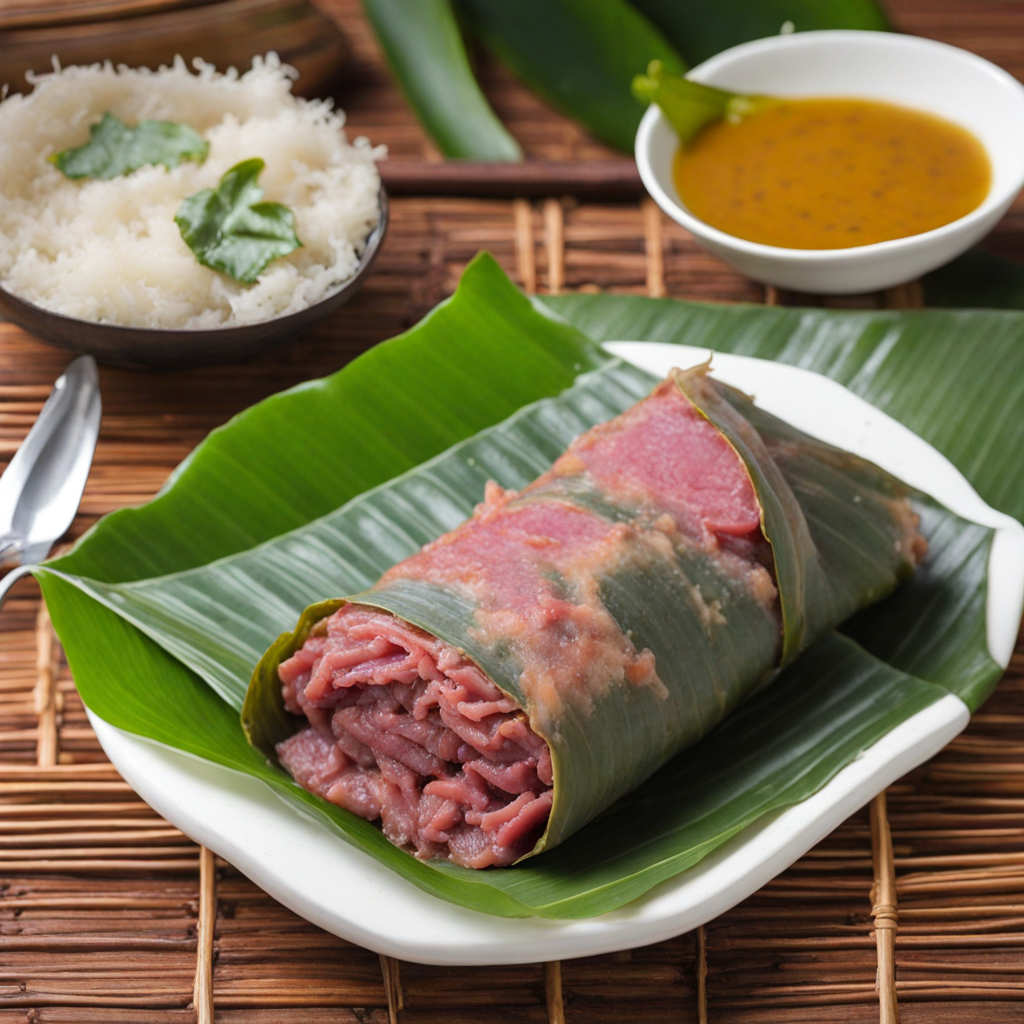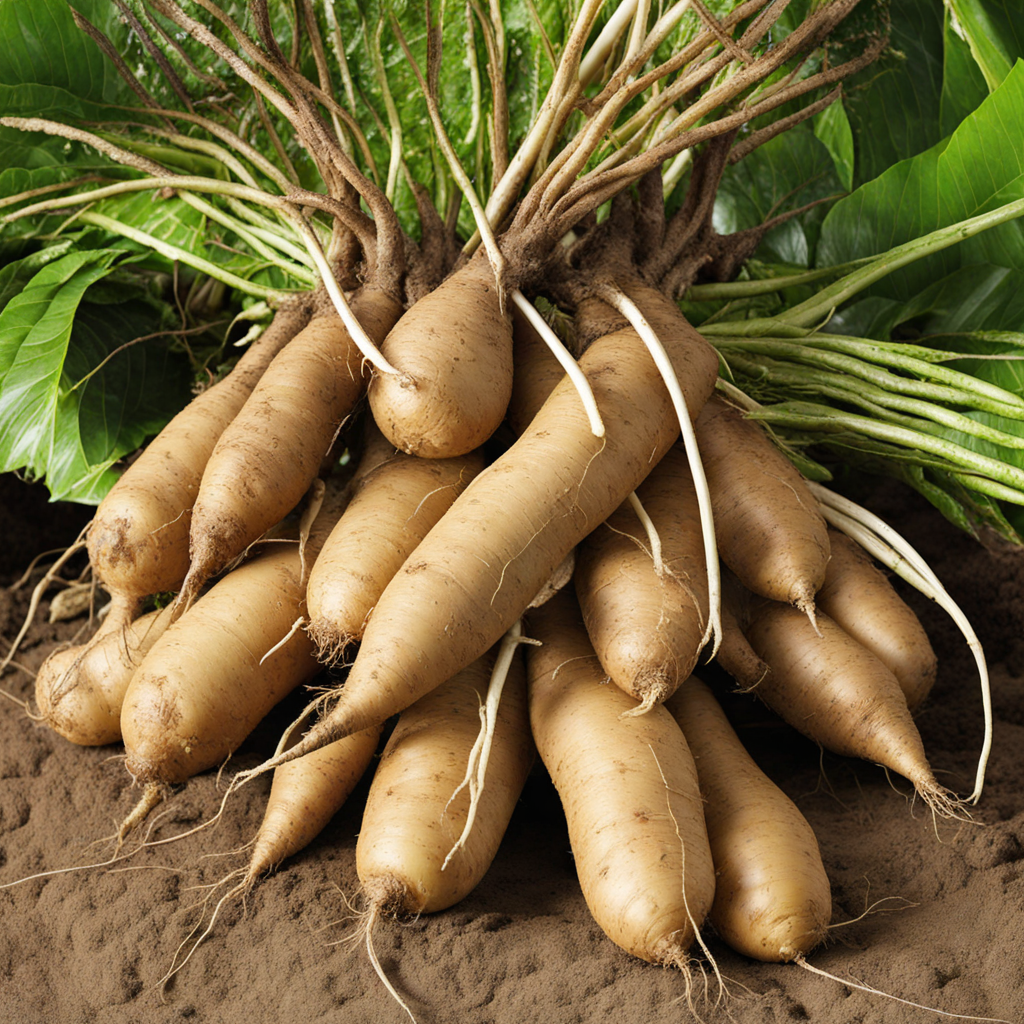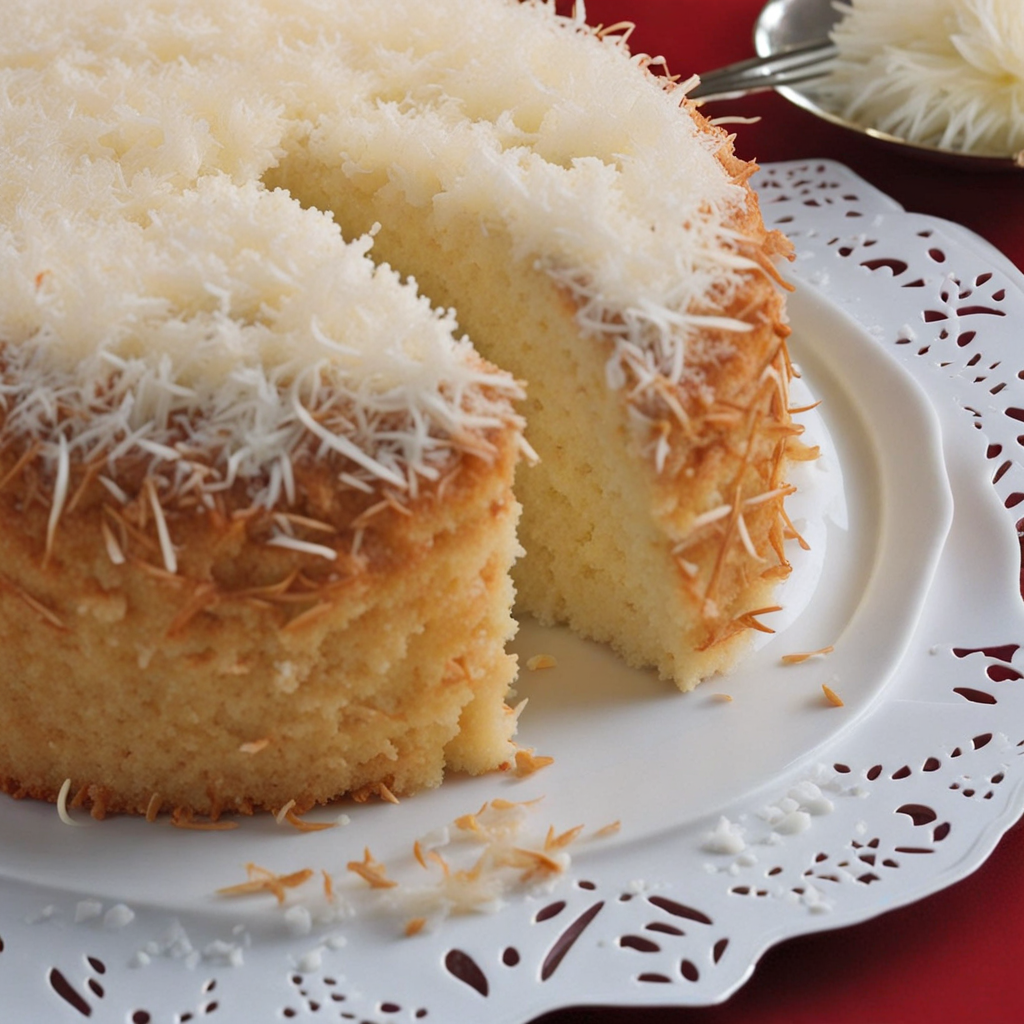Lū Pulu
Lū Pulu is a traditional Tongan dish that beautifully showcases the rich culinary heritage of the islands. At its core, this dish features corned beef, which is often combined with fresh, vibrant greens like taro leaves or spinach. The beef is typically cooked slowly, allowing the flavors to meld together, resulting in a tender and savory experience. The greens are wrapped around the beef and then steamed, often in a coconut cream sauce, which adds a luscious, creamy texture and a hint of sweetness that perfectly complements the saltiness of the meat. One of the standout qualities of Lū Pulu is its simplicity and heartiness. The dish is often served with a side of steamed rice or root vegetables, making it a filling meal that is perfect for gatherings and celebrations. The melding of flavors from the coconut cream, corned beef, and greens creates a unique taste profile that is both comforting and exotic. Each bite brings a taste of the oceanic climate and fertile lands of Tonga, making it a genuine representation of Tongan cuisine. As you savor Lū Pulu, you’ll appreciate the cultural significance it holds in Tongan society. This dish is not just about sustenance; it symbolizes community and togetherness, often enjoyed during family feasts or special occasions. The combination of ingredients and the cooking method reflect the local practices and the use of readily available resources, allowing you to indulge in a culinary experience that tells a story of tradition and heritage. Whether you’re a seasoned food lover or a curious culinary explorer, Lū Pulu promises to offer a delightful taste of Tonga that lingers in your memory.
How It Became This Dish
Lū Pulu: A Culinary Treasure of Tonga Origins Lū Pulu, a traditional dish from the islands of Tonga, is a hearty and flavorful meal that has become a staple in Tongan cuisine. Its origins can be traced back to the deep-rooted culinary practices of the Polynesian peoples, who have inhabited the islands of the South Pacific for thousands of years. The dish, which primarily features corned beef, taro leaves, coconut cream, and a blend of savory spices, reflects the agricultural bounty of the islands, as well as the influences brought by early European explorers and traders. The use of taro leaves (known as “lu”) in Tongan cuisine is significant, as taro is one of the most important staple crops in the Pacific Islands, revered for its versatility and nutritional value. Taro itself has been cultivated in the region for millennia, and its leaves are often used in various dishes, including lū, which translates to “wrapped” or “covered” in Tongan. The addition of corned beef, an ingredient introduced during the colonial era, highlights the adaptability of Tongan culinary traditions, which have embraced and integrated foreign influences while retaining their unique identity. Cultural Significance Lū Pulu is more than just a dish; it embodies the spirit of Tongan hospitality and communal life. In Tongan culture, food plays a vital role in social gatherings, celebrations, and feasts, known as "feasts of love" or "ako." These occasions often feature an array of traditional dishes, with Lū Pulu being a prominent highlight. Its preparation and sharing symbolize kinship and community, reinforcing social bonds among family and friends. The dish is often served during important ceremonies, such as birthdays, weddings, and funerals, making it an integral part of Tongan rituals and traditions. Its preparation is typically a communal activity, with family members working together to create the dish, thereby fostering a sense of unity and collaboration. Lū Pulu is often accompanied by other traditional foods, such as ‘ota ika (raw fish marinated in coconut milk) and ‘lu pulu (a similar dish made with different types of meat), showcasing the rich tapestry of Tongan culinary heritage. Development Over Time Over the years, Lū Pulu has undergone various transformations, reflecting the changing dynamics of Tongan society and the influences of globalization. While the core ingredients of taro leaves and corned beef remain constant, contemporary interpretations of the dish have emerged, incorporating local produce and modern cooking techniques. Traditionally, Lū Pulu was cooked in an underground oven called a “umu,” where the ingredients were wrapped in leaves and placed on hot stones, allowing the food to steam slowly in its own juices. This method not only enhances the flavors but also aligns with the Tongan philosophy of cooking, which emphasizes the importance of natural elements and the earth. Today, while many families still honor this traditional method, others opt for modern appliances like ovens or slow cookers, making the dish more accessible to those who may not have the means to prepare it in a traditional umu. The advent of tourism and the global food landscape has also played a role in the evolution of Lū Pulu. As Tongan cuisine gains recognition on the international stage, chefs and home cooks alike have begun experimenting with the dish, introducing new flavors and ingredients. This has resulted in hybrid versions of Lū Pulu, which may incorporate elements from other Pacific Islander cuisines or even Western culinary practices. Such innovations have sparked a renewed interest in Tongan food, allowing it to thrive in a modern context while still respecting its historical roots. Moreover, the increasing awareness of nutritional health has prompted many Tongan families to reassess traditional dishes like Lū Pulu. While the original recipe is hearty and comforting, some have sought to lighten it by using fresh vegetables or reducing the amount of coconut cream and meat. This evolution reflects a broader global trend of seeking healthier food options while still preserving the essence of beloved traditional dishes. Contemporary Relevance In recent years, Lū Pulu has garnered attention beyond the shores of Tonga, thanks in part to the diaspora of Tongan communities around the world. As Tongans migrate, they carry their culinary traditions with them, introducing Lū Pulu to new audiences. Tongan cultural festivals and events often feature cooking demonstrations and tastings, allowing non-Tongans to experience the dish and its significance firsthand. Furthermore, social media and food blogs have played a significant role in popularizing Lū Pulu among food enthusiasts globally. Photographs of beautifully plated Lū Pulu adorned with vibrant taro leaves and luscious coconut cream have found their way onto platforms like Instagram, sparking curiosity and interest in Tongan cuisine. This exposure not only helps to preserve traditional recipes but also encourages a broader appreciation of the culinary diversity of the Pacific Islands. In Tonga, Lū Pulu remains a beloved dish that connects generations. Grandmothers pass down recipes to their grandchildren, ensuring that the cultural heritage associated with the dish is preserved. Additionally, the dish serves as a reminder of the resilience of Tongan culture in the face of modernization and globalization, illustrating how traditional practices can adapt while retaining their core identity. Conclusion Lū Pulu is a testament to the rich culinary heritage of Tonga, encapsulating the history, culture, and communal spirit of the Tongan people. Its evolution reflects the complexities of cultural exchange, adaptation, and resilience, making it not just a meal but a symbol of identity and belonging. As Tongan cuisine continues to evolve and gain recognition on the global stage, Lū Pulu stands as a delicious reminder of the power of food to connect people, celebrate traditions, and honor the past while looking towards the future. Whether enjoyed in a traditional umu or modern kitchen, Lū Pulu remains a cherished dish that embodies the heart and soul of Tongan culture.
You may like
Discover local flavors from Tonga







